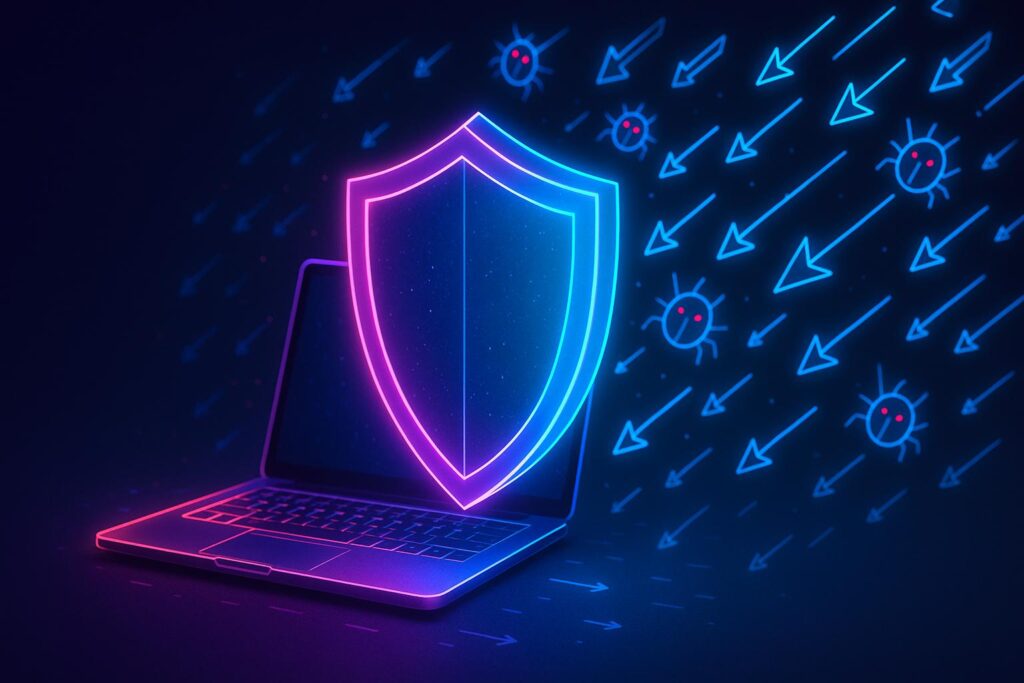Listen to the article
As cyberattacks grow more sophisticated with AI, organisations are increasingly relying on combined email security and XDR platforms for proactive protection, detection, and response amid escalating global risks and geopolitical tensions.
Email protection combined with extended detection and response (XDR) is rapidly becoming indispensable for modern cybersecurity, especially as organisations confront increasingly sophisticated threats driven by artificial intelligence (AI). The pairing empowers businesses to proactively counteract complex attacks, maximise security return on investment (ROI), and streamline operations amid a fragmented and high-risk digital environment. As cybercriminals deploy AI to enhance phishing, vishing, and deepfake-enabled scams, adopting integrated, multilayered strategies that address both technical and human vulnerabilities is crucial.
The current cybersecurity landscape is marked by complexity and escalating risks. According to the World Economic Forum’s latest Global Cybersecurity Outlook, cyberspace is fractured by geopolitical tensions, sprawling supply chains, emerging technologies, and a widening skills gap. Small organisations are especially vulnerable, with 35 percent assessing their cyber resilience as inadequate—an increase sevenfold since 2022—while 72 percent of all organisations report heightened cyber risks. The report highlights AI-powered adversarial advances as a primary concern for nearly half of all organisations, driving a surge in social engineering and phishing attacks.
Email remains the primary battleground for cybercriminal activity. Daily assaults including phishing, business email compromise, credential harvesting, and ransomware continue to target corporate email systems with increasing sophistication. One prominent challenge is the human element: IT administrators managing multiple tasks may unintentionally overlook critical security alerts. A recent case study underscores this vulnerability when attackers exploited a spoofed Microsoft 365 login page to steal credentials and launch phishing campaigns, capitalising on a missed alert by an overburdened IT administrator.
The scale of the threat is underscored by Microsoft’s Digital Defense Report 2024, which documents that between July 2023 and June 2024, roughly 7,000 password attack attempts per second were blocked. The report also illustrates a staggering 400 percent increase in techscams since 2021 and a fourfold rise in distributed denial-of-service (DDoS) attacks, underscoring the sophistication and breadth of modern cyber threats that spare no organisation, regardless of size.
In this landscape, detection and prevention alone fall short. XDR platforms play a critical role by extending visibility and automated response across email, network, endpoints, and cloud environments, which is vital given the 24/7 nature of attacks. Combining XDR with robust email security enables rapid containment and remediation, halting lateral threat movement and downstream phishing campaigns before they escalate. Managed XDR services provide real-time detection of anomalies, swift suspension of compromised accounts, centralised alerting to reduce human error, and enhanced forensic analysis that frees IT teams to concentrate on broader strategic risks.
The financial implications underscore the urgency of integrating email security with XDR. With global cybersecurity spending projected to rise to $213 billion in 2025, driven by escalating threats and AI deployment, organisations must ensure every dollar translates into effective defence. The combination reduces downtime, mitigates potential millions in breach-related losses, and supports compliance with regulatory and cyber insurance requirements through improved audit readiness and reporting.
To maximise this synergy, managed service providers and their clients should adopt multilayered email defences enhanced by AI-powered detection capable of analysing threats embedded in documents, links, and images beyond known bad patterns. Strong authentication, including multifactor authentication and continuous identity verification, limits adversary movement within networks. Automated, responsive incident detection and containment powered by XDR and backed by 24/7 security operations closes critical response gaps. Continuous staff education remains vital, as human vigilance is essential to combat evolving phishing techniques and social engineering risks. Regular backups and secure data isolation provide resilience against ransomware and data loss.
AI remains a double-edged sword. While 66 percent of organisations anticipate AI will significantly impact security this year, only 37 percent have adequate processes to assess AI tool security before deployment, exposing them to novel risks. The rise in AI-enabled cybercrime, including deepfake impersonations and automated spear-phishing, heightens the imperative for adaptive, holistic defences.
The broader geopolitical context compounds these challenges. Rising tensions have translated into heightened cyberwarfare risks targeting critical infrastructure globally. For example, Russia-linked hackers reportedly compromised rural water systems in Texas, exemplifying vulnerabilities in public utilities. Digital espionage campaigns from various state-sponsored actors focus on stealing sensitive data and embedding malware poised for future conflicts, even as some governments reduce cybersecurity budgets, potentially weakening resilience. This shifting landscape, characterised by fragmented regulations and widespread skills shortages, demands integrated, automated cybersecurity solutions as a baseline for resilience.
In summary, as cyber threats evolve with AI-driven complexity and geopolitical tension, the integration of advanced email security with XDR is no longer optional but essential. This combined approach provides a force-multiplier effect—enhancing detection, speeding response, reducing risk, and optimising security operations for organisations of all sizes. Managed service providers and their customers who embrace these technologies and best practices will not only keep pace with increasingly sophisticated adversaries but regain control over safeguarding their operations, data, and people in a highly volatile cyber environment.
📌 Reference Map:
- Paragraph 1 – [1], [4]
- Paragraph 2 – [1], [2], [4], [6]
- Paragraph 3 – [1], [3]
- Paragraph 4 – [1], [3]
- Paragraph 5 – [1], [5]
- Paragraph 6 – [1]
- Paragraph 7 – [1], [4]
- Paragraph 8 – [1], [7], [4], [6]
- Paragraph 9 – [1]
Source: Noah Wire Services



